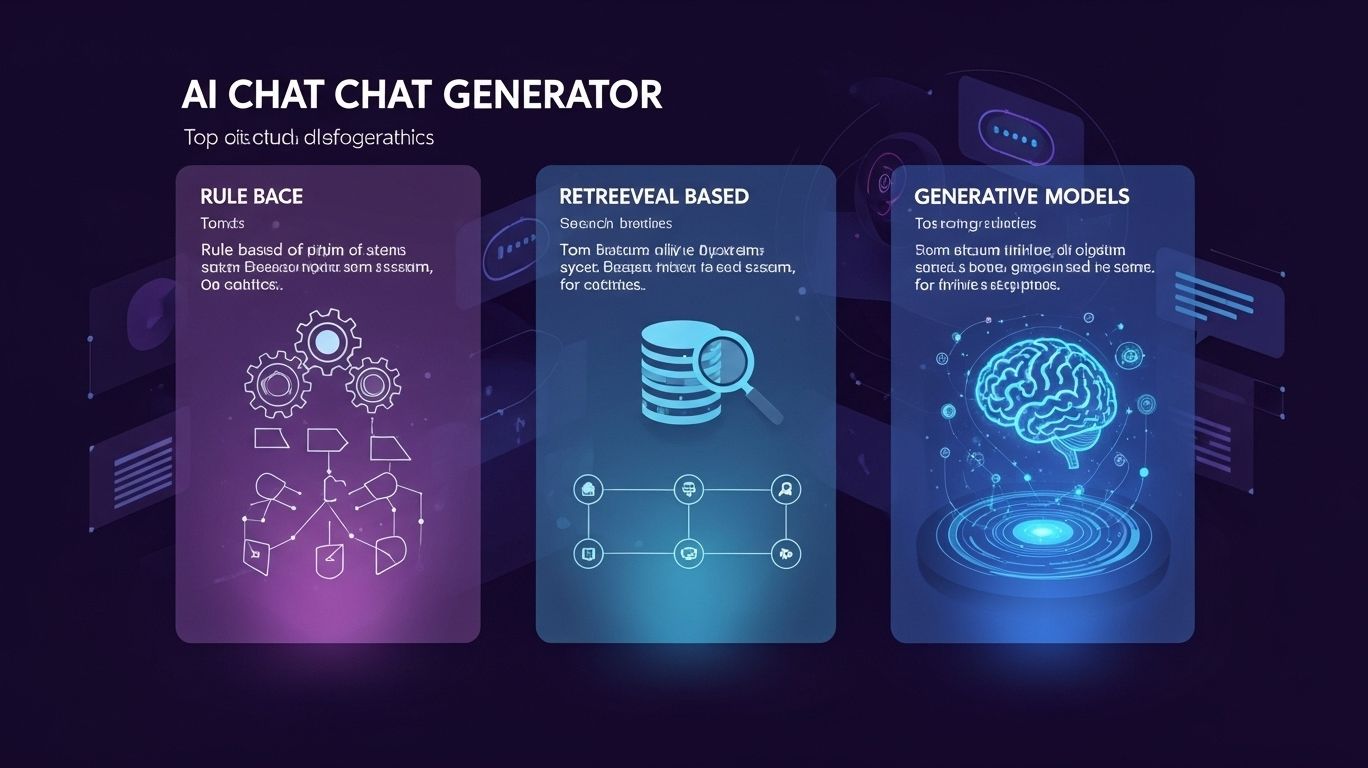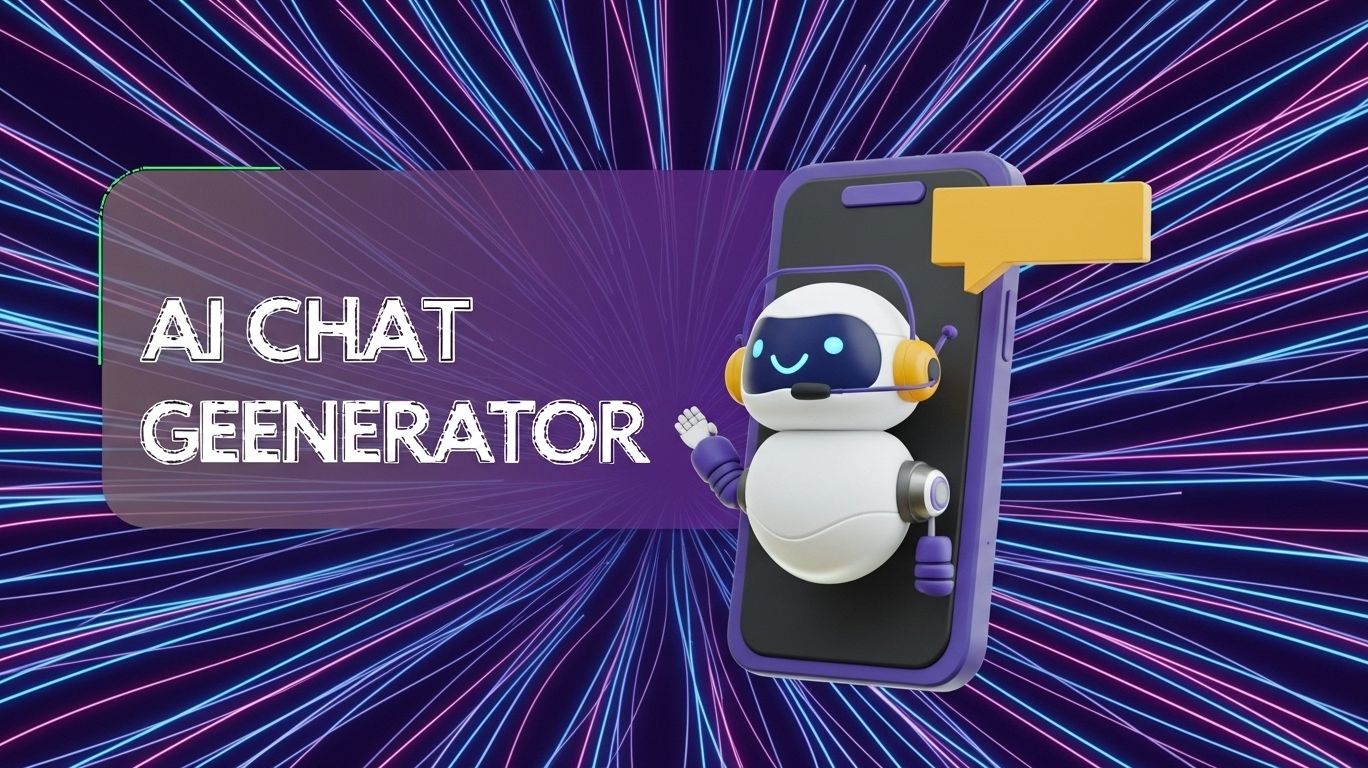
Artificial Intelligence (AI) has transformed the way we interact with technology. One of the most exciting innovations is the AI chat generator, a system designed to simulate human-like conversations in real time. From answering customer service questions to powering virtual assistants like Siri and Alexa, AI chat generators are rapidly becoming part of everyday life, making interactions seamless and allowing users to start chatting instantly.
With the ease of use of AI chat generators, anyone can start a conversation instantly, even without technical expertise or prior experience.
An AI chat generator is designed to create text-based responses that feel natural and human-like. In simple terms, it’s what powers modern chatbots. Unlike the old “press 1 for support” menus, today’s AI-powered chat systems can carry on dynamic conversations.
These systems use natural language processing (NLP) and machine learning to understand context, interpret intent, and generate meaningful replies. Users can send a message to the AI chat generator to initiate chats that are user-friendly, accessible, and feel like honest conversations. They’re not just responding to questions—they’re learning from interactions and becoming more effective over time.

AI chat generators take a step forward, coming in different flavors, each with strengths and limitations, aiming to improve user action.
Generative models represent the cutting edge, enabling chat systems that feel remarkably human.
Behind the friendly chat interface lies complex technology. Let’s break it down and understand how these systems respond to user inputs.
Some AI chat generators allow users to interact instantly without creating an account, making access quick and user-friendly. Others may require completing a verification process, such as confirming you are human, before using the service.
In terms of security, the system may review the security of your connection before granting access, ensuring a safe and trusted environment for users.
AI chatbots learn from massive datasets—everything from books to online conversations. This data is cleaned, tokenized, and structured for training.
Pre-trained models (like GPT) can be customized for specific industries—customer service, healthcare, education, etc.—to make them more accurate and relevant, allowing them to access and use relevant file information.
This combination ensures that AI chat generators don’t just work in theory but also deliver in real-world applications.
The beauty of conversational AI is how widely it can be applied. Here are some of the most common (and exciting) uses:
Some AI chat generators also allow users to upload files or images, and provide options to remove them if needed.
AI-powered chatbots handle FAQs, troubleshoot issues, and escalate complex cases to human agents. They save businesses money and give customers 24/7 support.
Think Siri, Alexa, or Google Assistant, and imagine an image of these AI tools aiding you in your daily tasks. These AI tools help with reminders, smart home control, and quick answers—essentially becoming digital companions.
AI chatbots act as tutors, helping students with language learning, homework support, generating new ideas, and providing instant feedback. They adapt to individual learning speeds for a personalized experience.
Some chatbots provide mental health support, offering empathetic and therapeutic conversations. While they’re not a replacement for professionals, they serve as accessible first contact points.
In games, AI chat generators power interactive storytelling. Imagine seeing an image of chatting with in-game characters who respond dynamically to your choices—that’s where gaming is headed, showcasing new ideas in interactive storytelling, ray ID.
The field is developing quickly, with several exciting breakthroughs:
These advancements push AI from being just “helpful” to truly human-like.

AI chat generators are more than just chatbots—they’re transforming the way humans and machines connect, offering users an ad-free experience. From customer support to gaming and education, they’re creating new possibilities for efficiency, personalization, and engagement.
If you’re curious about experiencing the power of conversational AI for yourself, check out girlfriend.ai—where cutting-edge AI meets meaningful interaction. Newgirlfriend.ai offers many AI companions to choose from as well as free and premium versions for more site access.
A chatbot is the application or tool you interact with, while an AI chat generator is the underlying system that creates the responses. In other words, the chatbot is the “face,” and the chat generator is the “brain.”
Not always. While they can generate highly relevant and human-like responses, they sometimes provide incorrect or incomplete information. That’s why ongoing improvements, fine-tuning, and human oversight are essential.
They can handle many tasks—like FAQs, troubleshooting, and simple requests—but they don’t fully replace human agents. Instead, they work best with human support for complex or sensitive situations.
